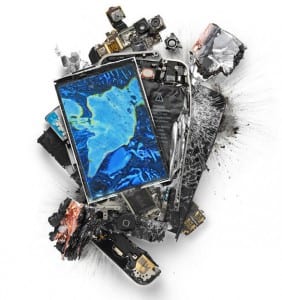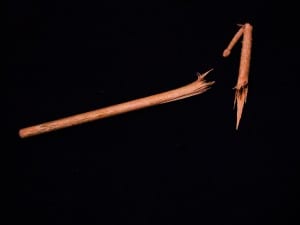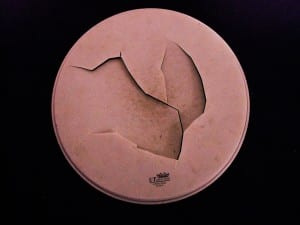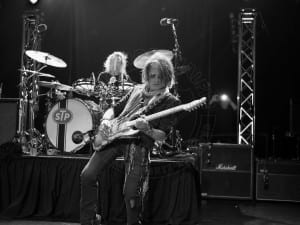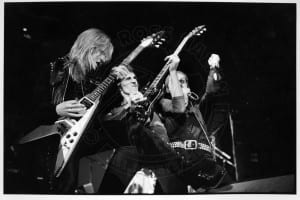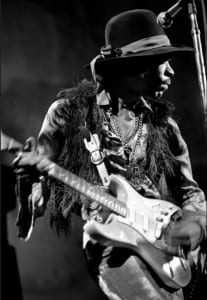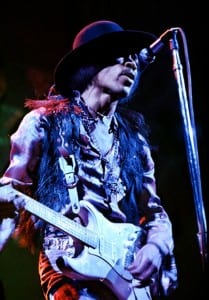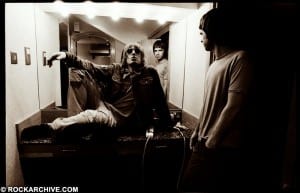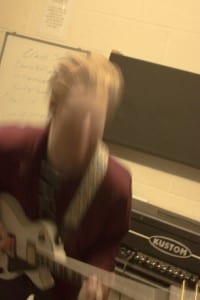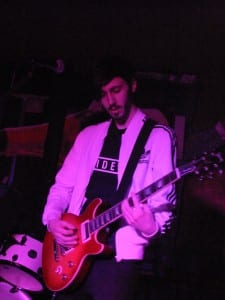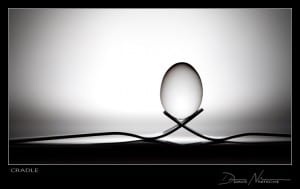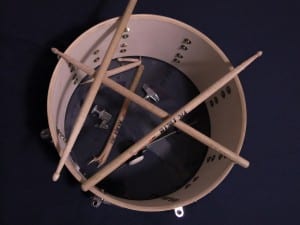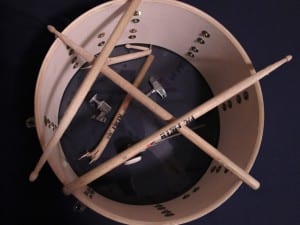Destructive Photography
One idea I had for my final project, linking to the idea of Entropy was taking objects and destroying, demonstrating the anger and chaos behind Entropy. For research into this area I looked at some collections relating into destruction of everyday objects. One I looked at in particular was the work “Beauty in the Broken: Photographs of Destroyed Apple Projects” by Paul Fairchild and Michael Tompert. In the work they smash up Apple Products such as the Apple Mini 2 (pictured), an Apple Mac book and an Ipod Shuffle. In the image all focus is on the destroyed and there is only a plain background. The idea behind this work is to show just how easily destroyed items we love are and provides a mirror for society, question our obsession with some of these objects.
In my attempt to do some destructive photography I destroyed two items, a drum stick and a drunk head skin. Both of these images can be seen below:
In both images the items are centred in the frame on a low ISO setting. In post production I increased the exposure slightly and then maximised the contrast of the images to give the pure black background in the images to replicate just a plain background similar to what was used in the example above. Although using these two items is not as meaningful as the example I discussed above, this does however show destruction which can easily be traced back to the word Entropy.
Band Photography
For my Final Project I decided I would relate band photography to the “Entropy” due to the chaos and aggression underlying in performances the music itself, this is particularly abundant in the rock/metal genres. For research into band photography I took a look at work by Ross Halfin a renowned band photographer famous for working with acts such as Aerosmith, KISS, Iron Maiden and Judas Priest. It is clear to see similarities in the style approached in these images, firstly the use of black and white colouring throughout Halfin’s back catalogue of photos, this could be a hint to the darkness and dark themes usually associated with the bands he shoots, for example as aforementioned he’s been to work with the band Iron Maiden, one band that has used many dark themes in their songs throughout they’re career ranging from themes of witchcraft to mass murders.
Additionally, in the photos of individual band members (usually playing live) he fills the frame as much as possible with the individual, I have included an example Halfin produced of Iron Maiden’s bass player; Steve Harris to support this. This could be to demonstrate the power of the music behind the photo and also the dominance of the performers while on stage as they essentially control the audience at that point in time.
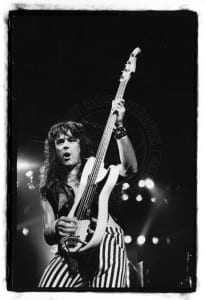
In terms of the settings for photography at gigs, most photographers use the same approach with a low aperture number due to the low light situation on the stage, a fast shutter speed due to the constant movement of the performers and also a high ISO number as the higher the ISO the warmer the camera sensor gets and the more noise will be captured in the photo.
Another well known gig photographer I looked at in my research was Elliott Landy, a well known photographer in the sixties classic rock era, working with such as acts as Jimi Hendrix, Jim Morrison and The Band. Looking particularly at the work he did with Jimi Hendrix, he uses a similar approach as Ross Halfin using black and white photography as seen in the example below shot at Filmore East, NYC, 1968:
Although his Jimi Hendrix collection does commonly revolve around black and white photography, there is a few in the collection in colour, one of which can be seen below. The image allows for a lot of attention to be drawn to the concert lighting, also demonstrating the psychedelic vibe of the the sixties classic rock era of which Jimi Hendrix was a big part of.
It’s clear to see that approaches to band photography vary between genre’s. The type of bands I have in mind of photographing could be classed as Rock and Indie, for the band that is classed more as Rock I feel that a similar approach to Ross Haflin could be beneficial. A lot of Indie bands also take a similar approach to Ross Haflin, however in my research I found that many also go for a warmer approach in the imagery, a good example of this can be seen in the image below of Oasis backstage at Wembley Stadium in 2000 taken by Jill Furmanovsky. This could be a good approach to take with the Indie band I intend to photograph for my Final Project.
I decided to try and get some band images over Easter break and see what I could get. I took photos for the band Hideout at a local gig and also took photos at band practice for the band Mosaics.
Above is a photo I took of the band Mosaics at band practice. In the photo the guitarist attempts a head bang while playing, unfortunately at this point I was still getting used to the settings of the camera. With knowledge I know of now, with the right stutter speed this could have turned out a lot better than it did. I had a similar issue when shooting photos for the band Hideout at their gig as I was still getting used to the camera to some extent. Below I have included the best photo I produced from the night, however in hindsight now I am more familiar with the settings, I should have increased the ISO and Aperture higher.
I did also attempt to photograph a gig in London over Easter Break, Myles Kennedy at London Islington Hall. Below I have included the best photo I got from that night. Unlike at the Hideout gig where I had a better view of the band, I was in the audience for this performance and so got some of the crowd in the frame which is not commonly used in professional band photos that I have researched, however I feel it does work in this image as it helps demonstrate the intimacy of the gig as he was only playing 250 cap venue.
Still Life Photography
This photograph is a piece from Dave Nitsche entitled “Cradle”. This work is a great example of Still Life photography and I personally really liked it due to the message behind it overall. The image consists of 3 objects, 2 forks and an unhatched egg, the imagery of the forks being used a cradle works well as the egg works well as a metaphoric infant. Overall it also works well with the phrase “From the Cradle to the Grave” as the forks can be used to demonstrate both of these states as obviously the forks can be used to eat the egg and kill any possible embryo inside. Overall I feel the message given across here is very powerful when looked closely into the work. The fact that the background is also kept completely empty gives more emphasis to the main message and draws the attention straight to the egg. Lighting used makes the edges of the frame turn black, possibly to further emphasise the fairly dark message behind the work.
I then attempted to do some still life photography of my own. I opened up snare drum, placed drum equipment such as the a a pedal, drum key and high hat clutch, as well as a broken stick and placed them inside and balanced 3 other drum sticks on top. The final products can be seen below:
